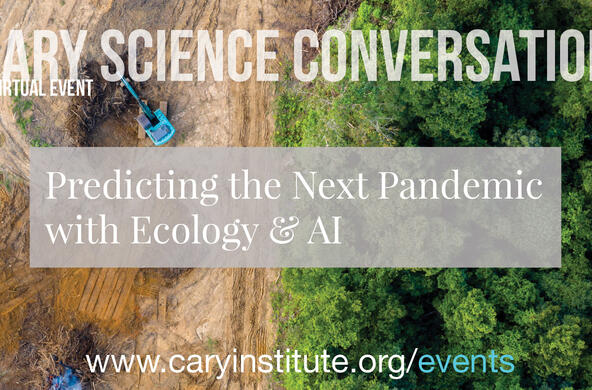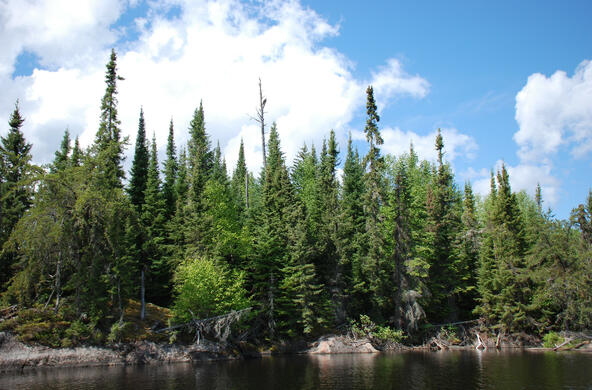About two-thirds of all infectious diseases in humans have their origins in animals. Scientists say the ability of a virus to mutate and adapt from animals to the human system is very rare, but the expansion of the human footprint is making that rare event much more likely.
For most people, up until the novel coronavirus took over the headlines, the possibility of a new disease emerging out of nowhere and spreading around the world at a breakneck pace seemed like something out of a science fiction movie. But some members of the scientific community have been sounding the alarm for decades, warning that it was not a matter of if, but when another pandemic would threaten humanity.
Why were scientists so sure that conditions were becoming ripe for a pandemic? CBS News spoke to three experts to better understand how human behavior has made such a development more likely than ever.
Where did SARS-CoV-2, the virus that causes COVID-19, come from?
The simple answer is scientists surmise the virus originated in bats, but they do not know exactly how it reached humans. Despite years of working to catalogue viruses, they had never observed this particular virus before.
"It's clear that SARS-CoV-2 is a bat-origin virus. The nearest relative is a virus we found in a horseshoe bat in South China in 2013, and it's 96.2% identical genetically to SARS-CoV-2," said Dr. Peter Daszak, a professor at Columbia University and president of the EcoHealth Alliance.
"What's amazing is that scientists have been actively searching for viruses all over the world for decades and have found thousands of new viruses in many thousands of wildlife hosts, but have never found this particular virus," said Dr. Richard Ostfeld, a disease ecologist from the Cary Institute of Ecosystem Studies, in New York's Hudson Valley.
How did the virus get from bats to humans? Daszak says there are various ways that could happen. People can be directly exposed to bat fluids or feces by being in caves, hunting, killing or butchering bats or simply through contaminated surfaces or the food or drink of people who live in rural China. Alternatively, other animals can act as intermediate hosts through farmed wildlife species or perhaps a livestock species.
"Some evidence suggests that it might have been present in one or more of the animals that were brought into the wet market in Wuhan, where the first clusters of human cases were detected," explains Ostfeld.
What is clear, explains Prof. Kate Jones, professor of ecology and biodiversity at University College London, is the virus had to morph to make the jump from animal host to human host.
"Most wildlife diseases just stay in wildlife but sometimes they can mutate in a way that can jump those species barriers. It is an incredibly rare event!" she told CBS News.
The impact of changing landscapes
In just the past 40 years an area the size of Europe has been deforested worldwide, and over the past century half of the world's rainforests have been destroyed.
"We are changing landscapes and encroaching into systems at a scale that we have never done before," said Jones, explaining that human destruction of natural landscapes is altering the interactions between animals and humans — which also changes the dynamics of the transmission of viruses.
"We disrupt their ecosystems, hunt them, build houses next to them, grow livestock right next to their populations...," said Daszak. "We allow the viruses they carry, that we've never been exposed to in our history, to emerge into our own populations."
Daszak and his team analyzed every known emerging disease over the past 60 years to assess its most likely point of origin and analyzed the changes happening in those places that could have caused pandemics to emerge. "Our analysis shows that land use change — the conversion of tropical forest into agricultural land and livestock farms — is associated with around 30% of known emerging diseases," said Daszak.
The reasons why this disruption of the natural habitat helps spread disease are multifaceted. "Perhaps the most obvious is habitat disturbance can cause the animals to move greater distances, carrying their pathogens with them, explains Ostfeld, adding, "Habitat destruction and degradation can reduce the health of these animal hosts which in turn compromises their immunity and allows pathogens to spread."
Another factor is that the destruction of biodiversity disrupts the predator-prey balance. "When predators disappear, often their prey, such as rats and mice, increase. Rats and mice are the sources of many of the pathogens that jump from wildlife to humans," Ostfeld said.
Human-caused climate change can further exacerbate the situation by pushing animal populations to move into different areas, and by compromising the health of animals through reduced range of habitat and/or less-than-ideal climate conditions in that habitat.
Animal trade and unsanitary conditions
With 7.8 billion people inhabiting the Earth, there is great demand for animals for food and other products or as exotic pets. But in various parts of the world, the way animals are captured, transported, housed and killed poses great risks.
"Both wet markets and the wild animal trade have been implicated in species jumps and epidemics," said Ostfeld. These animals are snatched from their natural habitats and transported surrounded by other animals, wild and domestic, and people in crowded conditions.
"If you were a virus, you'd be very happy in this situation, because jumping to new hosts would be a piece of cake, opening up tremendous opportunities for infection and further transmission," he said.
Jones is also concerned about the clearing of land and the rise in large-scale factory farms. "We now have huge, intensive farms of domestic species which are then interacting with wildlife and those wildlife could be acting as amplifying hosts for many pathogens," said Jones.
"When we house these animals in unsanitary conditions with many other species of animals, we can create ideal conditions for these pathogens to jump to us," Ostfeld added.
How do we reduce the risk of future outbreaks?
Now that humanity is unfortunately acquainted with how dangerous and disruptive a pandemic virus can be, the question is, will we learn from this experience, change our ways and put protective measures in place?
Daszak has a three-point plan he says could help minimize the threat going forward.
First, he suggests launching a global effort to identify viruses in wildlife that could likely emerge in the future. "We estimate there are 1.7 million of them, and we could discover the vast majority (>70%) in a 'Global Virome Project' costing $120 million per year over 10 years," he said. He has already created a 501c3 nonprofit to help fund the project.
Secondly, work with communities in emerging disease hotspots that are on the front lines. Identify the risk behaviors that lead to viruses spilling over from wildlife into the human population and work with these communities to reduce their risk, test for evidence of viruses and stop outbreaks dead in their tracks in the earliest stages.
Lastly, he urges working to develop vaccines to prevent not just the diseases we already know about, but also new viruses we discover in wildlife. Ideally, Daszak would like to see a universal coronavirus vaccine to protect against the whole family of viruses.
Ostfeld would like to see a vast increase in the amount of protected land, to help preserve the ability of natural areas to protect us from infectious diseases. He also supports funding for scientists work on the question of how to better use already developed areas to provide food, fiber, and other resources needed by people.
"Habitat destruction and climate change pose myriad threats to our health and well-being. It's not just viruses," explains Ostfeld. "We continue these destructive practices because we prioritize the short-term gains for relatively few of us and ignore the long-term suffering by all the rest of us. It is not impossible to change this false calculus, but we don't have endless time to get it right."





